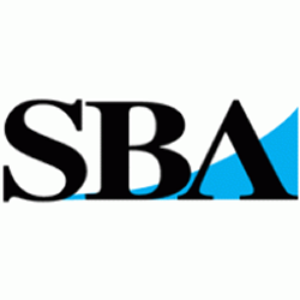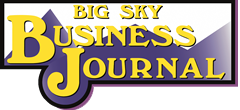Tiny Bubbles Cleaning, 737 S Billings Blvd #10, 876-5131, Laforge, Lavora Ruth, Service, Billings
All Pro Towing Jim Auto Repair, 510 N 24th St, 698-6247, Adkins/Norton, James/Frank, Service, Billings
Mt Power Ranger Llc, 2725 Howard Ave, 794-5200, Schlegel, Joseph, Service, Billings
Enw Carpet And Cleaning Services, Llc, 2024 Clubhouse Way #2, 384-9937, Coversup, Evelyn, Service,
D & L Roofing’s, 3051 St Johns Ave, 698-3023, Luoma, Laura, Service, Billings
Mockel Precast & Excavating Co.,16 Industry Loop, 594-1769, Leland, Rob, General Contractors, East Helena
BSDW Cop-Billings Llc (St Andrews), 1634 Saint Andrews Dr, 672-7222, Hansen, Holly, Service, Billings
Copia Reserve Llc (6th Ave N), 2004 6th Ave N, 672-7222, Hansen, Holly, Service, Billings
Copia Reserve Llc (Grand), 1903 Grand Ave, 672-7222, Hansen, Holly, Service, Billings
Yellowstone Casino (S 32nd), 927 S 32nd St W Ste A-C, 850-3160, Grizzly Doc And Eddy’s Beverages Llc, Liquor License, Billings
Yellowstone Casino (King), 2300 King Ave W, 652-4980, Grizzly Doc And Eddy’s Beverages Llc, Liquor License, Billings
Vigilant Landscaping Inc, 4156 Frances Ave, 855-5289, Rookhuizen, Joe & Amanda, Service, Billings
Uproot Electrology & Aesthetic Llc, 1620 Alderson Ave Ste 27, 861-1422, Oppenborn, Raquel, Service, Billings
Amen Notary Services Llc, 1876 St Paul Ln, 698-2333, Amen, Mary Ann, Service, Billings
As One Solutions Llc, 6804 Commercial Ave Bld B, 647-9618, Smith, Adam & Stephanie, Manufacturing, Billings
Carlos C Sanchez, 516 N 22nd St, 561-0191, Sanchez, Carlos, Restaurants, Billings
Abi Scherer Consulting Llc, 243 Westchester Sq N Unit A1, (330) 676-3052, Scherer, Abigail, Service, Billings
T.P.C. Construction, 1123 Denway Pl, 661-5748, Prescott-Erwin, Tristen, Roofing Contractors, Billings
Coinstar (5317 Grand Ave), 5317 Grand Ave, (425) 943-8000, Shomler, Kelly, Service, Billings
Sky Country Therapy and Consulting, 1629 Avenue D Ste A5, 655-1795, Verhasselt, Jennifer, Service, Billings
Lark/Spur Interior Design Studio Llc, 1123 Iristan Ln, 465-0968, Chamberlin, Erin, Service, Billings
Harmonisounds Llc, 1613 Hollyhock St, (916) 667-2000, Brinlee, Todd, Service, Billings
Kennedy Family Counseling Pllc, 2525 6th Ave N, 384-3366, Kennedy, Sean, Service, Billings
DT Construction, 221 S 35th St, 366-3886, Thompson, Drew, General Contractors, Billings
JH Painting, 918 Avenue C, 855-9832, Handsaker, Larry, Service, Billings
BCCM Construction Group Inc, 100 E 7th St Ste 201, (816) 659-9115, Young, Jason, General Contractors, Kansas City MO,
Platinum Vape Llc, 1425 Broadwater Ave, 698-2776, Myrstol, Josh, Retail Sales, Billings
Preya Natural Soap Llc, 4865 Blue Spruce Circle, 839-5985, Gray, Mylyn, Retail Sales, Billings
Burritos Don Chuy, 1414 Main St, 539-4579, Martinez/Martinez Romo, Michell/Jose De Jesus, Restaurants, Billings
Clear Sky Home & Lawn Care, 12 North Street, 697-4598, Butts, Craig, Service, Fromberg
JM Test Systems Llc, 5857 Stearns Circle, (225) 925-2029, Harris, Luwana, Service, Billings
KC’s Puff N Stuff, 928 Broadwater Ave Suite 107, 939-0204, Cooper, Kelly Jo, Retail Sales, Billings
Town Pump Express, 691 S Shiloh Rd, 497-6923, Billings 13 Car Wash Llc, Service, Billings
Landrie Aviation, 436 Marathon Dr, 690-4926, Landrie, Adam, Retail Sales, Billings
Rock Star Painting, 2550 Wyoming Ave, 684-1232, Mallicott, Roger, Service, Billings
JG Distribution Inc, 1935 Belvedere Dr, 871-6523, Green, Jordan, Distributors, Billings
NO Creative, 1007 N 23rd St, 855-4888, Olsen, Nickolas, Service, Billings
Tanner Property Investments Llc, 4419 Loma Vista Dr, 591-2999, Harp, Rachel & Todd, Real Estate Rental, Billings
Wonderful Wiener, 401 E Main St, 591-3728, Schug, Brady, Restaurants, Laurel,
Anatnom Era EW Llc, 100 N 27th St, 690-4388, Delp, Ashley, Real Estate Rental, Billings
Buerkley Contracting, 5011 Haynes Rd, 580-4047, Buerkley, Brenton, General Contractors, Shepherd
Roaring Pearl Windows & Doors, 4206 Carlton Ave SW, 839-8820, Roehr, Jordan, Service, Billings
Xtreme Clean Llc, 1144 Horn Street, 855-1334, Limberhand, Dennis, Service, Billings
Stronghand Construction Llc, 1144 Horn Street, 855-1334, Limberhand, Dennis, General Contractors. Billings
Billings Shiloh Hotel Llc, 705 Henry Chapple St, 830-0866, Larralde, Raelene, Restaurants, Billings
Fleetpride Inc, 3605 Hesper Rd, (469) 249-7687, Curington , Mary, Service, Billings
Wise Designs, 331 Phyllis Cir E, 671-4023, Wise, Joshua, Service, Billings
KC Cares Llc, 3440 Cook Ave, 697-2807, Combs, Kelsey, Service, Billings
TJH Industries, 2315 1/2 Lewis Ave, 647-8199, Hoppe, Thomas, General Contractors, Billings
Artesania Reyna’s, 6048 Linck Circle, 560-2851, Antonio, Salome, Retail Sales, Shepherd
Lily’s Cleaning, 2107 Clubhouse Way #1, 671-7267, Anderson, Emilie, Service, Billings
Bath Fitter, 5710 Interstate Ave #2, 606-5556, Boomen, Rick Vanden, Service, Billings
The Endless Bead, 1009 Parkhill Dr, 698-1196, Carnathan, James, Retail Sales, Billings
Miniso Winky Store Holding Llc, 300 S 24th St W Ste A14, (626) 463-4251, Choy, Bobby, Retail Sales, Billings
Southern Home Charms, 3721 Fort Laramie Dr, (435) 841-0606, Emmanuel, Amanda, Retail Sales, Billings
Ordnance Food Works, 4443 Phillip St, 671-1832, Thomas, Lance, Restaurants, Billings
59101 Handyman, 4139 Ryan Ave, 561-5408, Pena, Marcillino, Service, Billings
Charter Real Estate Company, 1148 16th St W Ste 16, 698-8203, Charter, Boyd, General Contractors, Billings,
MRE Handy Man Services Llc, 622 Orchard Ln, 561-9385, Nelson, Mike, Service, Billings
Live The Essential Oil Life Llc, 3001 62nd St W, 860-7433, Merkel, Nancy L, Retail Sales, Billings
Lane Estates Llc, 1204 Avenue E, 371-6534, Lane, Brittany, Real Estate Rental, Billings
Yellowstone Milling, 124 White Circle, 690-1224, Rambur, Todd, Retail Sales, Billings
Teske Construction Inc, 5165 Dovetail Ave, 670-9084, Teske, William, General Contractors, Billings
Downstream Design, 740 Topaz Ave, 698-9059, Sougstad, Tait, Service, Billings
Acapost Construction Cleaning, 293 Prospectors Ln, 591-4029, Hood, Service, Billings
R&M Solutions Inc, 206 North D St, 855-2349, Aasterud, Mary Beth, Service, Bridger
Odd N Ends, 806 Governors Blvd, 839-3300, Cadlo, Jason, Service, Billings
Malia’s Egress Windows, 1042 Broadwater Ave, 671-8575, Malia, Richard, General Contractors, Billings
Yellowstone Valley Construction, 3122 Phillip St, 670-2011, Nelson, Ronal, General Contractors, Billings





